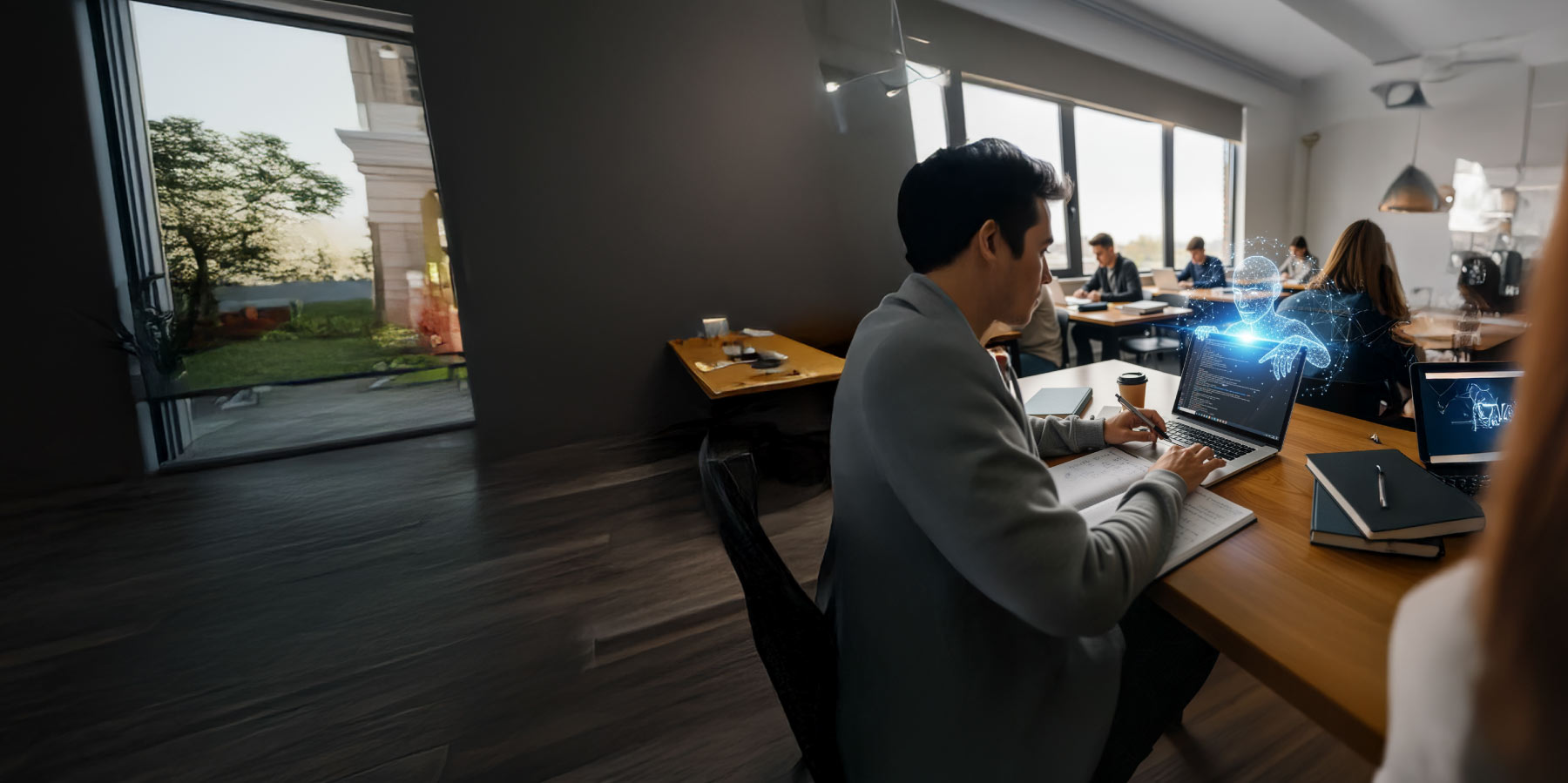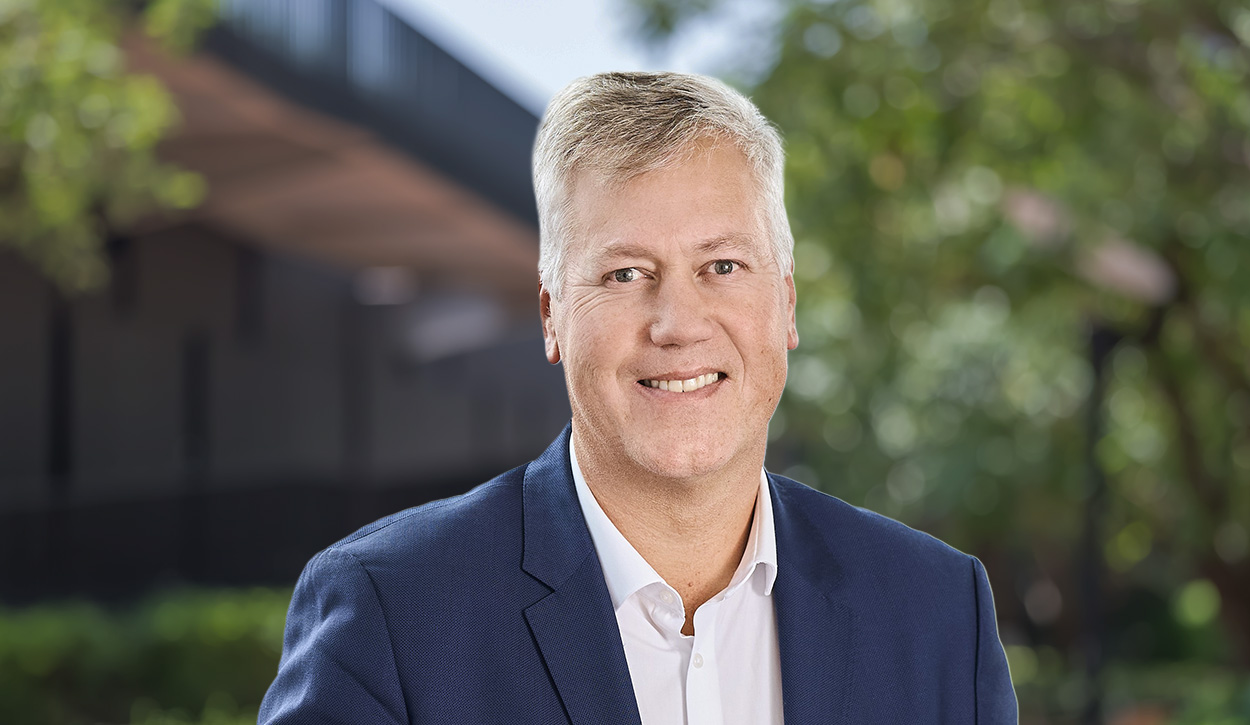More than 50 participants attended The Idea Hunter discovery event at which Professor Bill Fischer shared his I-D-E-A tool for hunting new ideas – the roots of innovation. Being an interested person is the place to start. Then add diversity to the people from whom you hunt ideas, build the habit of idea hunting into your routine and develop your idea muscles. Finally, you need to understand how ideas flow through a community or organization, and create an appropriate environment to facilitate idea hunting agility.
Ideas arguably constitute an organization’s most valuable asset. Businesses and individuals are constantly searching for fresh, new ideas – the source of innovation. While some people believe that new ideas are the preserve of brilliant minds, others, like Professor Bill Fischer, argue that people’s ability to find good innovative ideas is more about habits than intellect. As Professor Fischer suggests in his book The Idea Hunter, co-authored with Andy Boynton, it is not just about originating ideas, it is about hunting ideas that are already out there, waiting to be spotted.
If breakaway ideas come easier to those who are in the habit of looking for them,1 how can this habit be cultivated? As a starter, Professor Fischer presented the I-D-E-A (Interested, Diverse, Exercised and Agile) principle.
- I: What are you interested in learning?
- D: Who can you learn from here who can give you a fresh insight?
- E: What are you going to do differently to learn?
- A: Where, when or how are you going to learn?
I – Interested
Idea hunting starts with finding your gig. A gig, in the business context, could be the focal point of your personal brand, professional identity or a company’s strategic issues. The process of finding your gig starts with reflecting on your passion and talents, knowing what you are good at and then connecting it to your professional marketplace. For example, Walt Disney’s gig was to create entertainment for the whole family and the result was the legendary Disney brand. A mismatch of any of these three circles might lead to wasted time and frustration.
Once you have established your gig and determined what to hunt for, you are more likely to find ideas that are relevant and will be of value to your business.
The first step is to be interested, not just interesting. People with intellectual curiosity tend to learn more and faster. And this eagerness for learning can even make up for a lack of brilliance. Learning refers to what we gain not only through a formal education but also in a much broader context, such as learning from people through the exchange of ideas. Interested people listen to other people attentively and ask relevant questions – it’s “active and engaged” listening.
Episodic curiosity is not enough to turn you into a learning machine, but it does make a difference and should be cultivated so that it becomes a habit; there are big idea gains to be harvested from just a little “directed” learning every day.
Idea hunting is also about unlearning. Don’t let your mind be constrained by convention. In order to be receptive to ideas, you first have to be “turned on” to receive all kinds of ideas. As Einstein put it, “Problems cannot be solved inside the frame they were conceived in.”
D – Diverse
The idea hunter seeks out a diverse collection of sources. Thomas Edison once said, “To get a good idea, you must first get a lot of ideas.” You need to ask yourself, “Who am I learning from?” Are you only speaking to similar people? Or do you proactively talk to people from different professional, social and demographic backgrounds?
We have different circles of friends and acquaintances with whom we share our ideas more or less often. We naturally tend to speak more often to people with whom we have a strong tie, such as family and friends, than to weak-tie contacts. But if you think of your gig, maybe some of your best ideas could come from people with whom you have weak ties – people who have a completely different idea network than you. This is the way to widen your intellectual bandwidth and bridge distant worlds. This is also part of the attraction that is making social networking so popular today.
Research has also shown that when groups stay together for too long without change, they tend to fall into “group thinking,” which prevents the generation of new ideas. This is one of the reasons that organizations often talk about injecting “fresh blood” into a team, such as young graduates, to rejuvenate the dynamics.
E – Exercised
Getting into the habit of hunting ideas is like exercising your idea muscles. Idea hunters use different platforms or tools to turn idea hunting into a routine. Charlie Munger, vice chairman of the investment firm Berkshire Hathaway, famously said, “I sell myself the best hour of every day,” i.e. the best hour in terms of learning, energy and so on. Location matters too. In a dynamic and diversified city such as New York or Shanghai, some people might find it easier to generate creative ideas. The world of ideas is not flat. Find where ideas are abundant and be sure to take advantage of this concentration.
A fundamental habit of idea hunting is observation. You can observe the world around you at anytime and anywhere as long as your eyes are wide open. This is not to say that you should pay attention to everything, but in the scope of your gig you should be alert not only to the obvious but also to the non-obvious.
Guest speaker Estelle Métayer,2 founder and CEO of Competia, provides managers, CEOs and board members with the right tools to effectively build and hone their competitive intelligence and strategic planning to capitalize on their strengths and excel. A trend spotter and strategy consultant, Estelle shared her way of observing the world and trends through an “alien eye,” i.e. seeing the world through an entirely different lens: thinking out of the box, using inspiration from other industries, and translating learning from other environments. In short, as Apple’s motto says, “Think different.”
Words such as twinsumers, ownerless, crowdsourcing and geolocalization, among others, are all applied by people who constantly observe the world around them.
Twinsumers are consumers looking for the best of the best, the first of the first, the most relevant of the relevant. Increasingly, they no longer connect to “just any other consumer,” they hook up with (and listen to) their taste “twins” – fellow consumers somewhere in the world who think, react, enjoy and consume the way they do.3 Some airlines offer passengers the possibility of choosing who they sit next to according to criteria such as profession, ethics or educational background. Examples include Dutch airline KLM’s “meet and seat” service and airBaltic’s SeatBuddy, which enable customers to select their seatmates based on the Facebook and LinkedIn profiles of fellow travelers.
Ownerless consumers are people who have decided to own less. A good example of the ownerless trend can be seen in Japan, where people can rent grandparents for a certain period of time for their children if theirs are not available. The hot concept of a public bicycle renting system in many cities is another great example of ownerlessness.
Crowdsourcing is a process that involves outsourcing tasks that are traditionally performed by an employee or contractor to an undefined, large group of people or community (a “crowd”), through an open call. Marketing campaigns that engage a pool of passengers in a spontaneous manner, such as T-Mobile’s Welcome Back advertisement at London’s Heathrow Airport, are a perfect example of crowdsourcing.
Geolocalization allows people to identify the real world geographic location of an object, for example using a GPS device or smartphone. One of the hottest new smartphone applications, it is changing people’s lives in traveling, making friends, and seeing the world. Where am I? What are the attractions in this city? Have my friends been here? What’s the best deal at any nearby restaurant? You now have the answers to all those questions simply by enabling the geolocalization function on your smartphone.
A – Agile
Because the world is not flat, when it comes to idea hunting you need to be agile enough to get into the right position to generate good ideas. Therefore, knowing the paths by which ideas flow, and the actors who shape that flow, is critical. Organizations should foster the right atmosphere for ideas to flow – for example, shaping a conversational environment that encourages idea hunting because innovation depends on the quality of conversations.
When Pixar, a computer animation film studio based in California, created a large atrium in the middle of the building to facilitate the exchange of ideas, it was initially perceived as a waste of space. However, it was purposely designed to increase the likelihood of conversations, thus maximizing the chances of encountering an idea.
In any network, the people who interact with others outside their immediate circles, i.e. those who stand near the “structural holes”4 – the gaps between different groups of people – and have conversations with people beyond their own spaces, are more likely to see and develop good ideas.
In any network, the people who interact with others outside their immediate circles, i.e. those who stand near the “structural holes”5 – the gaps between different groups of people – and have conversations with people beyond their own spaces, are more likely to see and develop good ideas.
Being agile is also about the ability to kill ideas at the right time. It is better to kill a bad idea early on than allow it to slow you down later. You need to know when unattractive ideas should be dropped.
Finally, Professor Fischer shared his lessons from a fishing guide. First, find out where the fish are – more volume means more nourishment. Second, look closer before you look further. And third, pay attention to where flows mix, in order to benefit from diverse sources of ideas.
Take personal responsibility for developing future talent – strive for the full integration of business and people transformations
Pekka A. Viljakainen, aka Bulldozer, is the founder of nofear-community.com, which examines the changing nature of leadership with the goal of finding tools for leading the younger generation.5 He spoke about his journey so far and described how he has hunted ideas to lead what he calls the “Playstation Generation” or “Digital Cowboys” – those born after 1985 – with no fear.
The success of the Finnish computer game developer Rovio (creator of Angry Birds) and the social networking service Facebook, for example, is an excellent illustration of how digital cowboys areemerging as tomorrow’s business leaders. Pekka asks, “Who are they? How can I lead them?”
According to Pekka, fear is the biggest factor preventing us from growing as business leaders. He told participants about the leadership challenges he has experienced himself throughout his career, which he has described in his book, No Fear: Business Leadership for the Digital Age.6 During the process of writing the book – documenting his failures and sharing them with other people – ideas started to grow. Being able to engage experts from various countries in totally different fields became a way of idea hunting. In this agile process, he successfully created an information flow loop, collecting ideas from weak-tie or even zero-tie contacts. The book’s aim is to provide real answers and solutions for other business leaders. Pekka hopes they will be able to learn from his successes and failures and gain a better understanding of how to lead the PlayStation Generation. To enhance and continue the learning, he later created the No Fear community.
Pekka recognizes that the current business environment is changing. We see the momentum of the emerging markets and that new business value is created through knowledge. The time of the lone leader at the top is history, and competition for the top skills and best talents is becoming fiercer. Digital cowboys are increasingly taking the lead in the business world. They are different. They are connected, decentralized decision makers. Hierarchy is not going to attract them. They are looking for affinity, reality and communication in personal relationship building. They want to have a say, to influence, to take responsibility, to have conversations – and today’s leaders need to think about how to create their value based on their personal needs.
However, Pekka strongly believes that the present generation should show no fear. They should show willingness and commitment to develop stronger next-generation leaders, to communicate, to trust, to offer and to perform. They should adapt themselves to lead the younger generation and help them further their careers. His advice is to simplify a few key messages, such as vision, mission and goals, and enhance people’s capabilities for system thinking and collaboration. He advocates that business leaders should take personal responsibility for developing future talent and strive for the full integration of business and people transformations.
References
1 The Idea Hunter: How to Find the Best Ideas and Make Them Happen
2 Competia
3 http://trendwatching.com/trends/TWINSUMER.htm
4 Structural Holes and Good Ideas








